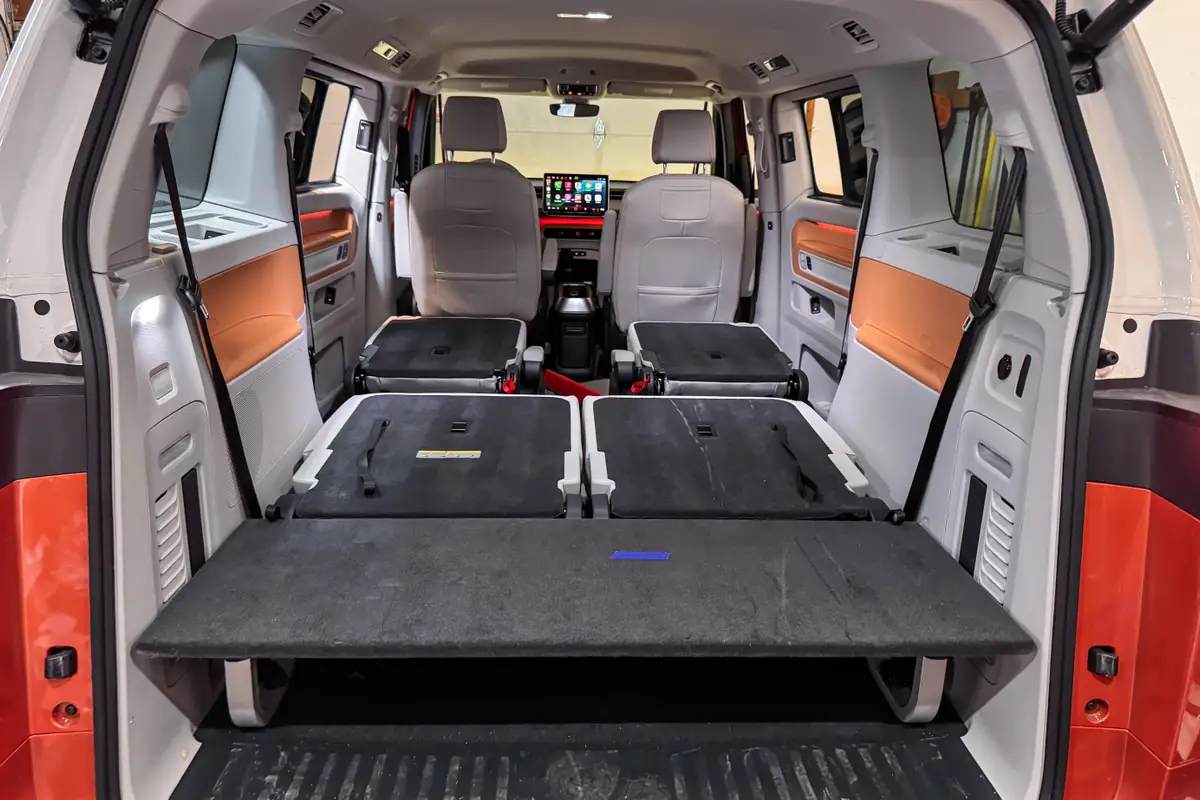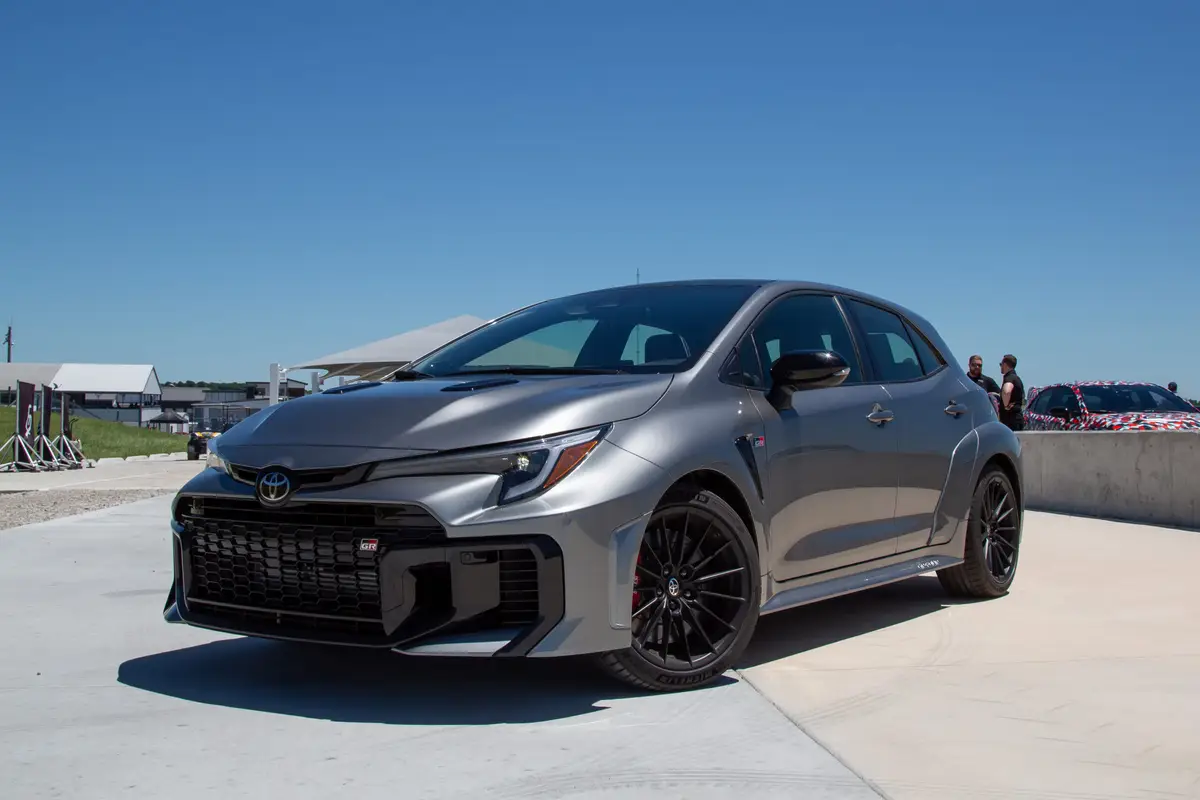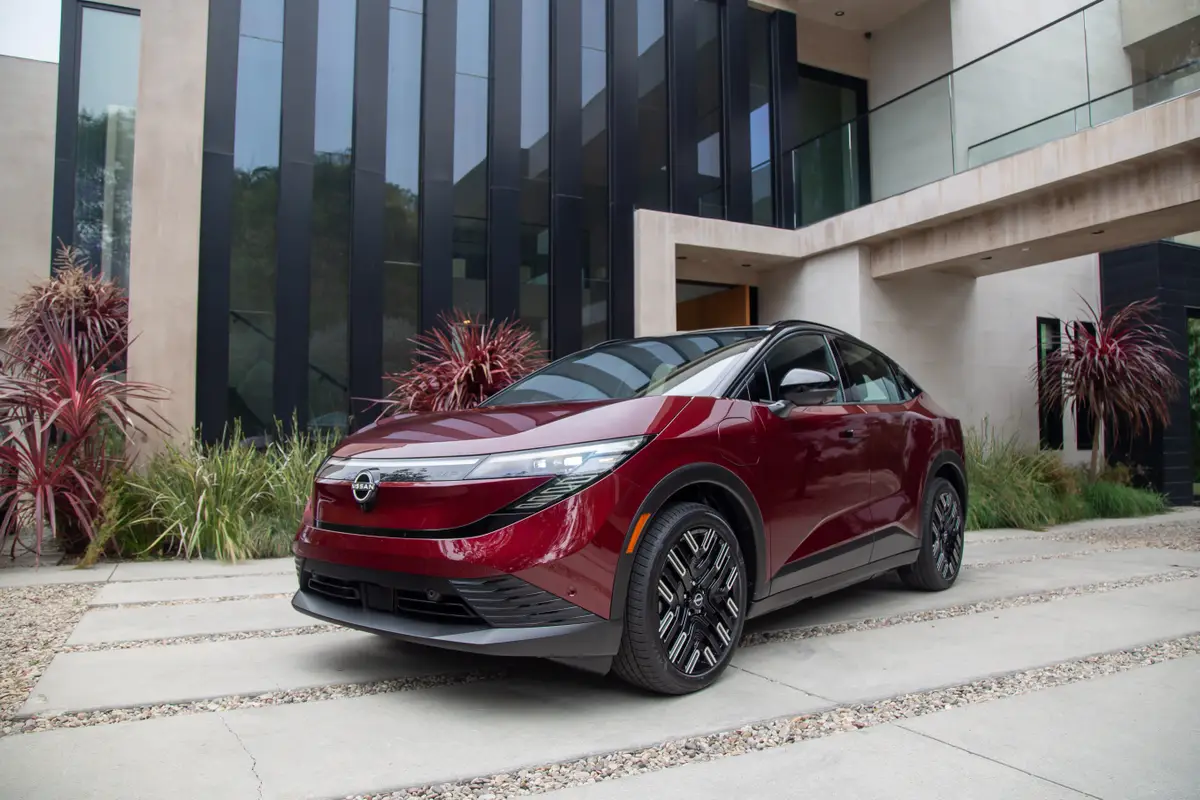2019 Chevrolet Silverado 1500: Everyday Towing and Hauling
Chevrolet’s redesign of the full-size pickup truck left me eager to test it in the real world and see how well its specifications deliver in real-world use. I was excited to spend a week in one to report back on everyday experiences behind the wheel, including towing my racecar and hauling loads of branches.
The test truck was a Silverado LTZ Z71 4×4 powered by the 420-horsepower, 6.2-liter V-8 engine with 460 pounds-feet of torque paired to the 10-speed automatic transmission. The first test for this Silverado was hauling a load of branches to the dump. This sort of job isn’t ideal for a short-bed truck, but the 2019 Silverado’s increase in bed volume, with 7 inches of additional width and the dozen tie-downs, made it easier to pack in the branches and strap them down for the trip.
Related Video:
The branches didn’t provide a test of the new bed floor made of steel that’s 47 percent stronger than last year’s model or test the durability of the bedliner, but they did show how easily the optional rigid bed cover unlatches and folds into just the front section to expose most of the bed.
Plus, it’s easy to climb into the bed and flip the cover back thanks to the Silverado’s CornerStep bumpers. For 2019, the cutouts have been enlarged to accommodate steel-toed boots, but they are also helpful to those of use who wear 12EE shoes even without the steel toes. And yes, the Chevy’s optional new power-actuated tailgate goes up and down with a press of the button. Even so, I found slamming it shut by hand is faster and easier when you have a free hand.
Test Truck Details:
- 2019 Silverado LTZ 4WD crew cab
- EPA fuel economy: 16 mpg city, 20 mpg highway, 17 mpg combined
- 6.2-liter Ecotec3 V8 with Dynamic Fuel Management
- 420 hp
- 460 pounds-feet
- 10-speed automatic transmission
- 20-inch aluminum wheels
I also used the Silverado to tow my Swift DB-3 Formula F racecar to the track for a Sports Car Club of America race weekend. The Swift DB-3 weighs about 900 pounds, and I used a U-Haul 6-by-12-foot open trailer to carry it, so the total was probably around 2,700 pounds or so, including my toolboxes.
Because the U-Haul had built-in surge brakes, I couldn’t try the Silverado’s trailer brake controller. But upon connecting the U-Haul’s lights to the truck’s plug, the computer recognized the connection and showed the trailer display on the infotainment screen. Probably the coolest feature of this connectivity is the ability to do a light test, where the computer cycles through each of the truck’s lights while you can stand behind the trailer to check for yourself that they are all working properly. It also shows the gas mileage after connecting the trailer, which most people who tow like to track.
The trailer and its payload were puny compared to the truck’s mammoth maximum 12,200-pound towing capacity, but still, the Silverado tracked like it wasn’t dragging a couple thousand pounds of dead weight from its hitch.
One detail on that hitch: The hole for the hitch pin in the receiver seemed to be a fraction of an inch smaller than standard. The hitch pin in my draw bar would go in one side of the receiver, but not through the other, even after I cleaned it with a wire brush. With a bit of rummaging in my towing supplies box, I came up with an alternative hitch pin that slid all the way through.
The Silverado’s other helpful features included the available in-bed 120-volt AC power outlet for powering a battery charger after I accidently left the racecar’s power switched on overnight. Plus, my MacBook Air fit inside the cabin’s center console when it wasn’t needed, and I enjoyed internet access through the Silverado’s built-in 4G mobile hot spot for the online race registration following a successful shakedown test during practice before the race weekend. The 4G in-car Wi-Fi has a free trial before requiring a monthly subscription.
The Silverado’s ability to provide seat heat to just the back, without heating the seat bottom, was a welcome therapy after pushing the racecar onto the trailer and loading the toolboxes and spare parts into the truck’s bed.
After multiple highway trips to and from the track, with and without the trailer, the Silverado’s fuel economy measured 16.4 mpg overall for the week of testing — it’s rated at 16/20/17 mpg city/highway/combined. The towing display showed the truck getting 14 mpg while towing, which is in line with the efficiency of less powerful tow vehicles I’ve used.
In total, the 2019 Silverado 1500 is fantastic for doing the kinds of chores that lead people to buy trucks. Its features and capabilities seemed tailor-made for the work I needed it to do, so I’d love for this truck to come back for a longer visit.
Featured stories




